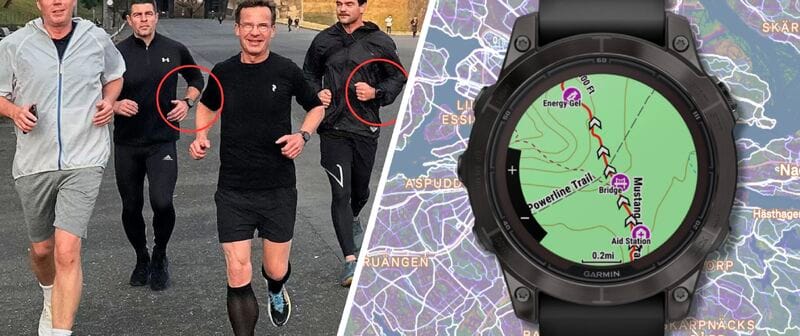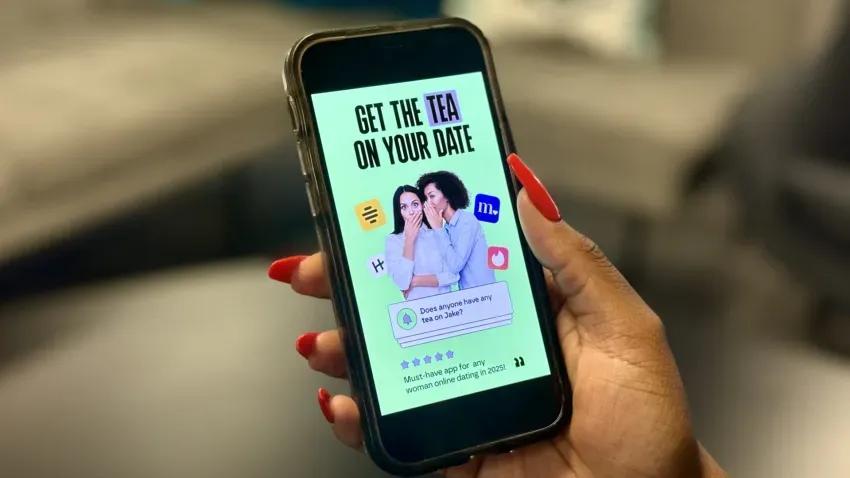When Fitness Meets National Security: The Growing Threat of Lifestyle App Data Breaches

How Swedish Prime Minister's bodyguards, a Russian submarine commander's assassination, and millions of compromised dating app users reveal a dangerous pattern in our digital lives
The Swedish Security Breach That Shocked the World
On July 8, 2025, Swedish security service Säpo launched an investigation that would send shockwaves through government protection agencies worldwide. Seven bodyguards protecting Prime Minister Ulf Kristersson had inadvertently exposed his private address, movement patterns, and travel itineraries through their public Strava fitness app uploads.
The investigation by Dagens Nyheter revealed that through analysis of over 1,400 training activities, the bodyguards had made at least 35 workout posts that revealed sensitive locations including the prime minister's private residence, his regular jogging loops, and international travel itineraries. The leaked data painted a comprehensive picture of Sweden's most protected individual, including movement patterns around Stockholm's government buildings and Harpsund, the prime minister's official country residence, and even a family trip to the autonomous Finnish islands of Åland in October 2024.
The exposure wasn't limited to the Prime Minister. The same Strava data also exposed locations connected to Swedish royalty, former Prime Minister Magdalena Andersson, and other government officials. Perhaps most alarmingly, some bodyguards recorded runs from within Säpo headquarters in Solna, revealing movements inside the classified facility.
"This is information that could be used to map the activities of the security service," Carolina Björnsdotter Paasikivi, Säpo's head of security, told Dagens Nyheter.

A Deadly Pattern: The Strava Assassination
The Swedish incident was not an isolated security lapse but part of a disturbing global pattern. In July 2023, the fitness tracking app became the unlikely weapon in what may have been the first assassination enabled by digital fitness data.
Former Russian submarine commander Stanislav Rzhitsky was shot dead while jogging in Krasnodar, Russia, after reportedly being tracked through his public Strava profile. Rzhitsky maintained a public profile with Strava tied to his real name, using data from his GPS-enabled Garmin Fenix 6X smartwatch to catalog running and cycling routes. Russian media reported that Rzhitsky almost always ran the exact same route, which was published on his public Strava account.
The assassination was particularly chilling in its digital forensics. An otherwise dormant account tagged Rzhitsky with a "kudos" (the Strava version of a "Like") to one of the dead sailor's last entries that showed a run on what appears to be his favorite route. The name of the dormant account was "Кирилл Буданов," the Cyrillic spelling of Kyrylo Budanov—Ukraine's intelligence chief.
Ukrainian intelligence later revealed specific details about the assassination, stating that Rzhitsky was shot seven times with a Makarov pistol around 6 a.m. in a deserted park during heavy rain. The motive appeared connected to a missile attack Rzhitsky's submarine Krasnodar had conducted on the Ukrainian city of Vinnytsia in July 2022, killing 23 civilians.

The Original Sin: Strava's 2017 Military Base Exposure
The Swedish and Russian incidents represent an evolution of security threats that first emerged in 2017 when Strava published its global heat map. The visualization, based on 13 trillion GPS points from users, inadvertently revealed secret military bases worldwide.
In war zones and deserts in countries such as Iraq and Syria, the heat map became almost entirely dark—except for scattered pinpricks of activity. Zooming in on those areas brought into focus the locations and outlines of known U.S. military bases, as well as other unknown and potentially sensitive sites.
Security experts discovered potentially sensitive American military bases in Somalia, Afghanistan and Syria; secret Russian military bases in Ukraine; a secret missile base in Taiwan, as well as an NSA base in Hawaii. The perimeter of the main Russian base in Syria, Hmeimim, was clearly visible—as were several routes out of the base that were presumably taken by patrols.
Air Force Colonel John Thomas, a spokesman for U.S. Central Command, told the Washington Post that the military was looking into the implications of the Strava map. Following the revelations, the US committed to develop additional policy, with Trump's cyber security coordinator referring to the revelation as forcing "all to look at risks of big data analytics".
Beyond Strava: The MyFitnessPal Catastrophe
While Strava exposed military locations, MyFitnessPal demonstrated how fitness apps could compromise personal security on a massive scale. In February 2018, the health and fitness app suffered one of the biggest data breaches in history when cyber thieves made off with the personal data of around 150 million users.
The stolen data included usernames, email addresses and hashed passwords, though fortunately payment information was stored separately. The breach took place in February but wasn't detected until March 25, with users being notified four days later.
Security experts warned that with such incredibly detailed records at their disposal, hackers could "suddenly have a very valuable source of intelligence about individuals' whereabouts". The breach followed other incidents where fitness app data revealed locations of secret military bases, highlighting the broader security risks of mobile health applications.

The Tea App Disaster: When Safety Apps Become Danger Zones
The most recent and perhaps most ironic breach occurred in July 2025 with the Tea app, a women's safety platform designed to help users avoid dangerous dating situations. The app, which rocketed to the top of Apple's App Store charts, suffered a catastrophic data breach that exposed tens of thousands of users' driver's licenses, selfies, and personal verification photos to users on the anonymous messaging board 4chan.
On July 25, 2025, users on 4chan discovered that Tea's entire user database was stored in a completely unsecured Google Firebase storage bucket with no password, no authentication, and no security measures whatsoever. The exposed data included:
- 72,000+ user verification photos including selfies and driver's licenses
- Personal identification documents with full names, addresses, and dates of birth
- Some direct messages between users
- Location data tied to user profiles
4chan users created automated scripts to mass-download the exposed files, with some claiming to have collected thousands of women's personal documents within hours of the discovery. The irony was devastating: an app designed to protect women's safety had become a tool that could facilitate stalking, harassment, or identity theft.
The Underground Network: Adult Platform Breaches
The pattern extends beyond mainstream fitness and safety apps into more sensitive platforms. Throughout the 2010s and 2020s, a series of breaches exposed users of escort services, adult platforms, and infidelity sites, revealing how digital desire creates digital vulnerability.
The infamous Ashley Madison hack in 2015 exposed 32 million users of the extramarital affair website, leading to divorces, career destruction, and at least two confirmed suicides. The breach revealed that 95% of the female profiles on Ashley Madison were fake, and that despite charging users $19 for "full delete" services, the company never actually removed user data from their servers.
More recently, platforms serving sex workers and their clients have faced similar exposures. Fatal Model, Brazil's largest escort service app with over 18 million records, suffered a massive data breach in 2023 that contained biometric verification data confirming the identities of both escorts and clients. In 2021, EscortReviews.com lost its entire database of 472,695 user accounts.

The Technical Anatomy of Digital Exposure
These breaches share common technical and behavioral patterns that make them particularly devastating:
The Verification Trap
Many platforms require real identification to prevent fake accounts, creating databases of verified sensitive information that become targets for criminals. The Tea app's requirement for driver's license verification, intended to ensure user safety, became the source of their exposure.
The Social Sharing Vulnerability
Fitness apps are designed as social motivators, with public profiles intended to encourage users through community engagement. However, what seems like harmless sharing within a circle of friends can, thanks to public-by-default settings, become accessible to anyone—from journalists to adversaries.
The Pattern Recognition Threat
Regular patterns in fitness data create "pattern of life" intelligence that can be exploited by hostile actors. Lines of activity extending out of bases and back may indicate patrol routes, while regular jogging paths reveal predictable vulnerabilities.
The Aggregation Problem
While individual data points might seem harmless, the aggregation of fitness data across multiple users can reveal sensitive installations and movement patterns. In major cities, the heat maps illuminate popular running routes, but in conflict regions, they light up military bases by aggregating the concentrated activities of exercise-focused personnel.
The Global Response: Too Little, Too Late?
Government and corporate responses to these incidents have been mixed and often reactive rather than proactive.
Platform Improvements
Following the 2017 revelations, Strava scrambled to respond, noting that all users have the ability to set activities to private so they're not included in the Heatmap. The company also implemented privacy zones to hide start/end locations of workouts and enhanced privacy settings.
Military Policy Changes
The Pentagon reviewed GPS policies after soldiers' Strava tracks were exposed, with U.S. Central Command announcing it was refining its security policies. Australia's government was caught off guard by the data leak and took over a week before giving instructions to enlisted soldiers on how to negotiate possible data breaches.
Regulatory Measures
Governments worldwide have begun implementing stronger data protection laws, including GDPR in Europe with massive fines for companies that fail to protect personal data adequately, and state laws in the US with individual data breach notification requirements.
The Human Cost: Beyond Data Points
These breaches represent more than cybersecurity failures—they're human tragedies with lasting psychological and social consequences.
The Trauma of Exposure
Victims of these breaches often suffer long-lasting psychological effects including post-traumatic stress, social isolation, trust issues, and career impact. Many report symptoms similar to those experienced by victims of physical assault, including nightmares, anxiety, and depression.
The Ripple Effect
The impact extends beyond direct victims, with spouses and children of Ashley Madison users facing secondary trauma and social stigma, and entire communities affected when local religious leaders, politicians, or business figures were exposed.
The Permanent Damage
Once intimate data is released online, it becomes virtually impossible to contain. Search engines, archive sites, and countless downloads ensure the information remains accessible indefinitely.
The Future Threat Landscape
As our lives become increasingly digitized, the attack surface for these types of breaches continues to expand:
Emerging Threats
- Deepfakes and AI Manipulation: The ability to create convincing fake intimate content presents new privacy threats
- IoT Vulnerabilities: Internet-connected devices in private spaces create new surveillance opportunities
- Biometric Data: The increasing use of biometric authentication creates new categories of sensitive data that could be compromised
- Quantum Computing: Future advances in computing power could render current encryption methods obsolete
The Economics of Exploitation
The underground market for stolen intimate data continues to thrive because of high-value targets representing lucrative blackmail opportunities, low-risk high-reward criminal opportunities, anonymity advantages through cryptocurrency and dark web marketplaces, and victim silence as many prefer to pay quietly rather than risk further exposure.
Lessons Learned: Protecting Ourselves in the Digital Age
For Individuals
- Digital Permanence: Anything stored or transmitted digitally should be considered potentially public
- Security Hygiene: Use strong, unique passwords and enable two-factor authentication
- Platform Selection: Choose services with strong security reputations and transparent privacy policies
- Privacy Settings: Set profiles to private, restrict activity visibility to followers only, and use privacy zones to hide start/end locations of workouts
For Organizations
- Security by Design: Build privacy and security protections into systems from the ground up
- Employee Training: Educate staff about the risks of sharing fitness and location data
- Policy Development: Create clear guidelines for personal device and app usage
- Incident Response: Have clear procedures for responding to breaches and communicating with affected personnel
For Society
- Legal Frameworks: Develop comprehensive laws addressing digital privacy violations
- Social Norms: Evolve cultural attitudes to reduce stigma for victims while maintaining accountability for perpetrators
- Technical Standards: Establish industry-wide security standards for platforms handling sensitive data
Conclusion: The Price of Convenience
The Swedish Prime Minister's exposed jogging routes, a Russian commander's fatal fitness tracking, millions of compromised dating app users, and countless military base revelations all point to the same uncomfortable truth: our digital convenience comes at the cost of our security and privacy.
These incidents serve as stark reminders that in the digital age, privacy is not guaranteed—it must be actively protected through technological safeguards, legal frameworks, and social norms that prioritize human dignity over digital convenience.
The pattern is clear and alarming. From fitness apps to dating platforms, from military bases to civilian homes, our most intimate data is being weaponized against us. The question is no longer whether there will be future breaches—there almost certainly will be. The question is whether we will learn from these failures and build systems robust enough to protect the most vulnerable aspects of human experience in an increasingly connected world.
As we move forward, we must remember that behind every data point is a human being whose privacy, safety, and dignity deserves protection. The victims of these breaches have paid a terrible price for our collective failure to adequately secure digital platforms. We owe it to them—and to ourselves—to build a digital future where innovation and privacy can coexist, where the promise of convenience doesn't come with the risk of total exposure.
The cost of our digital lives should not be our human dignity.









